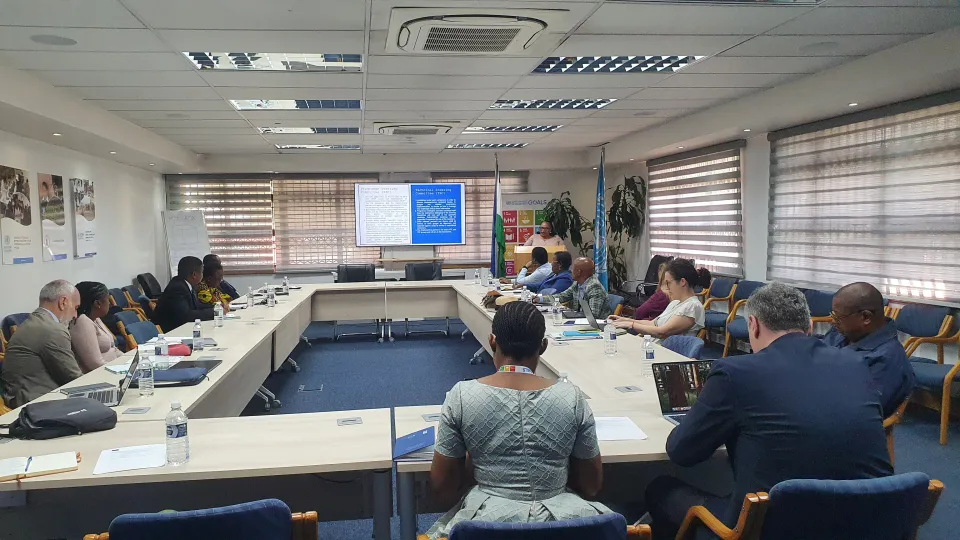Elections are an essential feature of representative democracy, but can also involve conflict. If elections go beyond debate and get out of hand, it can result in election related violence. The outcome: death and suffering, destroyed communities with crippled local economies and development prospects. Moreover, it harms credibility and faith in democratic processes and institutions. Recent outbreaks of election related violence in, for example, Nepal (2008), Colombia (2010), Belarus (2010) Guatemala (2011) and Senegal (2012) are stark reminders of such destruction.
International IDEA’s Electoral Risk Management Tool (ERM Tool) is designed to empower electoral management bodies (EMBs) and other state agencies to prevent and mitigate election related violence. It is also designed to increase the capacity of civil society organizations, academia and international organizations to understand, prevent and mitigate election related violence. The tool will be made available as a global public good in late 2013.
In a series of articles, International IDEA will illustrate how and why the Electoral Risk Management Tool is being piloted and tested by four separate organizations, in four different parts of the world.
The Colombian example
Colombia on 30 October 2011; the Colombian people are getting ready to elect their governors, mayors and local council members. The hopes are the elections take a democratic and peaceful discourse. But the reality proved far different. In the run-up to the election more than two dozen candidates were assassinated. Hundreds more were suspected of collaborating with guerrillas and drug traffickers, and the presence of paramilitaries, guerrillas and rebel groups, such as Fuerzas Armadas Revolucionarias de Colombia (FARC), affected the electoral outcomes. The electoral process was plagued by vote-buying which entrenched political clans that froze out reform minded newcomers. Before the elections, Misión de Observación Electoral (MOE), a civil society organization renowned for domestic electoral observation and for producing electoral risk maps, initiated a joint pilot project with International IDEA in order to test the Tool. MOE was attracted to International IDEA’s product because it is unlike anything else available currently: it is election specific and can be used in any country or context.
How does the tool work?
The International IDEA's ERM Tool is integrated into a software application that includes three interactive modules: knowledge resources, analytical instruments and prevention and mitigation strategies. These can be used in combination or as standalone resources. Each module is flexible enough to allow users to focus on what is relevant in a given country and a particular electoral context. MOE coordinator, Felipe Jimenez points out that the great benefit was being able to customize the tool and create a model with factors specific to the Colombian electoral context.
“When we first looked at the checklist for identifying risks of election related violence, provided in the tool’s knowledge resource component, we found seven factors which we deemed very significant to us. Six of the factors were election-specific, such as: ‘lack of adequate administrative regulations’; ‘inadequate operational planning’; ‘Inadequate funding, financing and budgeting’; ‘poor or no training for electoral officials’; ‘poor performance of the EMB’; and ‘inadequate security arrangements’, and one external factor, ‘natural hazards’, which is very significant to Colombian context due to increased floods in 2011.” Jimenez also noted that the Tool allows for the inclusion of new factors. “In addition, we were able to create two new factors, ‘poor or no training for electoral judges’ and ‘poor or no training for electoral monitors.’ Both of these are very relevant in Colombia.”
MOE usually analyses existing datasets to predict electoral risks and generate early warnings. However, testing of this tool entailed collecting additional data from the field. This was done through a targeted survey, interviewing representatives from the municipal registrar, national police, the military, the electoral monitoring committee, political parties, civil society organizations, the ombudsman and mayoral candidates from six municipalities1 before the election day. “The survey was essential as we had no way of getting this information by reviewing public records or monitoring news via the main media outlets”, Jimenez said.
The ERM Tool can generate risk maps and trend charts which, according to Jimenez, allows the user to display quite complex information in a way that is useful for policy agencies, the media or outside observers. He notes that, long written reports are not easily digested and often ignored, the mapping and trend charts can help to communicate powerful messages and findings.
MOE’s evaluation report of the Tool will help International IDEA to improve the quality and usability of the product before it is officially launched, and MOE has indicated that it will continue to use the tool in the future and support other peer organizations in the region in utilizing the methodology.



